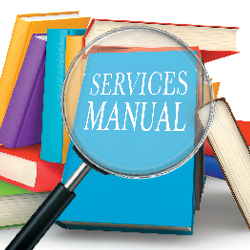|
REGISTRATION REQUIRED
exhibiting 101
 Rule-Breaking Breakdown
At an event, breaking rules can go against the spirit of fairness. But in this guide, we tell you which rules are made to be broken, when to break them, and how to do it with grace (and permission!) By Betsy Earle
Trade shows ask exhibitors to adhere to a substantial number of terms and conditions that are listed in both exhibit and general service contractor (GSC) contracts. The rules are not standard between shows, and some shows have more rules and policies than others.
There's a reason that trade shows have so many rules and regulations: to give exhibitors an even playing field. Some of the rules have become more stringent as technology and trends have evolved so that show management can ensure equal opportunity. But on occasion, you might have reason to do something outside of the show's general parameters. But before you ask to break the rules — or request a variance — you have to understand them so that you have all the tools to make a successful ask. Here are some key areas where a variance might come into play: 1 Booth height. Booth height refers to the height of the exhibit structure. Generally, height guidelines are set by the International Association of Exhibits and Events (IAEE). Sometimes, shows will override these guidelines with their own set of rules and unless they ask for a variance, exhibitors will be expected to comply. Most inline booth contracts limit the height of exhibit components to 8 feet. On occasion, it's set at 10 feet. This limit includes everything from the tables and chairs to the tallest structural piece in the booth. If you're working with an exhibit manufacturer that isn't used to complying with the general rules, your designer might recommend a structure or header board that's over the standard height guidelines. To implement that plan, you'll need to request a variance. A typical island booth will have a 16-foot height restriction. If you want to build something over that height, be sure to get it cleared when you submit your exhibit floor plan to show management for approval. 2 Line of sight. The IAEE restricts inline exhibits to 4 feet tall, 5 feet in from the front and sides of your exhibit. If you have a neighbor on one or both sides of you, you can't have any exhibit components that are over 4 feet tall in the front corners of your booth. Some shows allow exhibitors to build their booth based on cubic space, meaning that there are no height restrictions on these corners, but the general rule is compliant with the IAEE standard. If you want to display tall equipment or monitors on stands in the front corners of your booth, ask show management long before you get to the show site. 3 Hanging signs. Some shows will limit the height of the top of a hanging sign to 16 to 20 feet, depending on the show and the convention center. Hanging sign variances can be requested, but note that some shows charge a fee for hanging signs that weigh more than 250 pounds and are required to be connected to truss. 4 Advanced warehouse window. Typically, the advanced warehouse window opens approximately 30 days prior to the show's move-in dates. If you deliver freight before this date, you'll be charged a freight surcharge. But let's say your exhibit house is in Orlando and you have two different shows in Los Angeles that are 45 days apart. It really doesn't make sense for you to ship your freight all the way back to your exhibit house between shows. Reach out to your show contact and see if they will give you a variance to deliver your freight slightly before the targeted arrival date. It's possible that you'll be stuck with that surcharge, but in this scenario, it's worth asking if there's anything they can do about the fees. Shows want to work with their exhibitors — especially veteran exhibitors — so they'll return year after year. I've even seen shows set up a caravan between shows if there's a substantial number of exhibitors presenting at both. 5 Target move-in date. Many shows give exhibitors a target move-in schedule, which is a four-hour period of time when freight is carried to the exhibit or when the exhibitor is allowed to start their setup. If you have a particularly complex exhibit build, you might need more time than what is given to you. This is a logical time to ask for a variance. This also can apply to exhibit move-out time. Keep in mind, however, that sometimes your target move-out variance request will not be approved, particularly if show management needs to be out of the facility by a certain time.
Before you ask to break the rules, you must understand them so you have the tools to make a successful ask.
6 Aisle demonstrations. Exhibit demonstrations need to take place within the parameters of the booth space. According to IAEE, guidelines state that “exhibitors should conduct sales presentations and product demonstrations in a manner which assures all exhibitor personnel and attendees are within the contracted exhibit space and not encroaching on the aisle or neighboring exhibits.” That said, on occasion, show management will grant exhibitors access to the aisles for things like moving robots or people in costume trying to engage attendees. I was recently at a show where the Pillsbury Doughboy was roaming the aisles taking photos with attendees. Now, I don't know for sure if the exhibitor requested a variance to make sure this was ok, but it can never hurt to make sure before investing money in an activation that could otherwise be shut down. 7 Food sampling. I would be remiss not to call out my food service or retail exhibitors, because I spend a substantial amount of time in this exhibit area. Exhibitors who give food samples should always submit a food sampling form for approval. As a rule, exhibitors are not permitted to bring in their own food because of exclusive contracts set up with a food and beverage provider. Exhibitors at food shows, culinary events, or sometimes manufacturers, however, will be permitted to bring in their own food products to serve, give out, or sample if said product is the primary business of the organization exhibiting. If this rule applies to you, there will be a food sampling form available for you to complete in advance of the show. If you don't complete this paperwork prior to show open, you are at risk of being unable to provide samples of your product. 8 Fire, smoke, and fog. There are a number of rules surrounding the use of fire, open flame, smoke, and fog machines in exhibits. Depending on what you are trying to accomplish, the building's plumber or fire marshal might be involved in you obtaining approval for what you want to do. Carefully look at the terms and conditions of your exhibit contract, and if you would like to do something outside the norm, clear it with the show and receive written confirmation that what you want to do is permitted. If you're presenting at a food show and require an open flame, you'll need to submit an application that is separate from the booth application for pre-approval. Other things that require special permits may include open flame for product demonstration or decorative purposes, pressurized aerosol containers, compressed gas, pyrotechnics, and any sort of hazardous chemicals. So now that you know what the variances are, how do you go about asking for them? Here's a general order of steps to follow: ➤ First, build a pre-show schedule that includes ample time to figure out what you need. If you plan well, you can make your variance requests as early as possible so you don't add stress to the show organizers or to your own team. ➤ Look on the GSC website for any variance forms that you might be able to submit. ➤ Call your account manager and key contacts at the show to ask for help. This is yet another reason why it is important to build those relationships. ➤ Ask your exhibitor appointed contractor (EAC) or exhibit house partner for help answering your questions. Your partners might be able to submit variance requests on your behalf. ➤ If you receive special permission, collect everything in writing in case there are questions later. ➤ Limit the number of times you have to ask for permission to break the rules. Variance requests should always be the exception, not the rule, when you're planning your trade show program. Trade shows offer a lot of rules and regulations to protect exhibitors' and attendees' safety and to create an equal playing field among exhibitors. That said, show management also wants their show to be successful and part of the show's success depends on the happiness of those exhibiting. In my opinion, the goal of a show should always be to maximize the benefits for show management, exhibitors, and attendees alike. The happier everyone is, the more successful the show will be. And don't be nervous to ask for a variance — show management is used to receiving special requests from exhibitors. If you have a reason to submit a variance, do so with careful steps so that you're set up for a successful trade show experience. E  Betsy Earle, CTSM
Betsy Earle, CTSMmanaging director and founder of Event Driven Solutions LLC. Earle obtained her MBA at the University of Miami and earned her Diamond-level CTSM designation in 2018. Exhibiting101@exhibitorgroup.com
|
|
|
||||||||||||||||||||||||||||
|
|
||||||||||||||||||||||||||||
|
TOPICS Measurement & Budgeting Planning & Execution Marketing & Promotion Events & Venues Personal & Career Exhibits & Experiences International Exhibiting Resources for Rookies Research & Resources |
MAGAZINE Subscribe Today! Renew Subscription Update Address Digital Downloads Newsletters Advertise |
FIND IT Exhibit Producers Products & Services All Companies Get Listed |
EXHIBITORLIVE Sessions Exhibit Hall Exhibit at the Show Registration |
ETRAK Sessions Certification F.A.Q. Registration |
EDUCATION WEEK Overview Sessions Hotel Registration |
CERTIFICATION The Program Steps to Certification Faculty and Staff Enroll in CTSM Submit Quiz Answers My CTSM |
AWARDS Exhibit Design Awards Portable/Modular Awards Corporate Event Awards Centers of Excellence |
NEWS Associations/Press Awards Company News International New Products People Shows & Events Venues & Destinations EXHIBITOR News |
||||||||||||||||||||
|
||||||||||||||||||||||||||||






